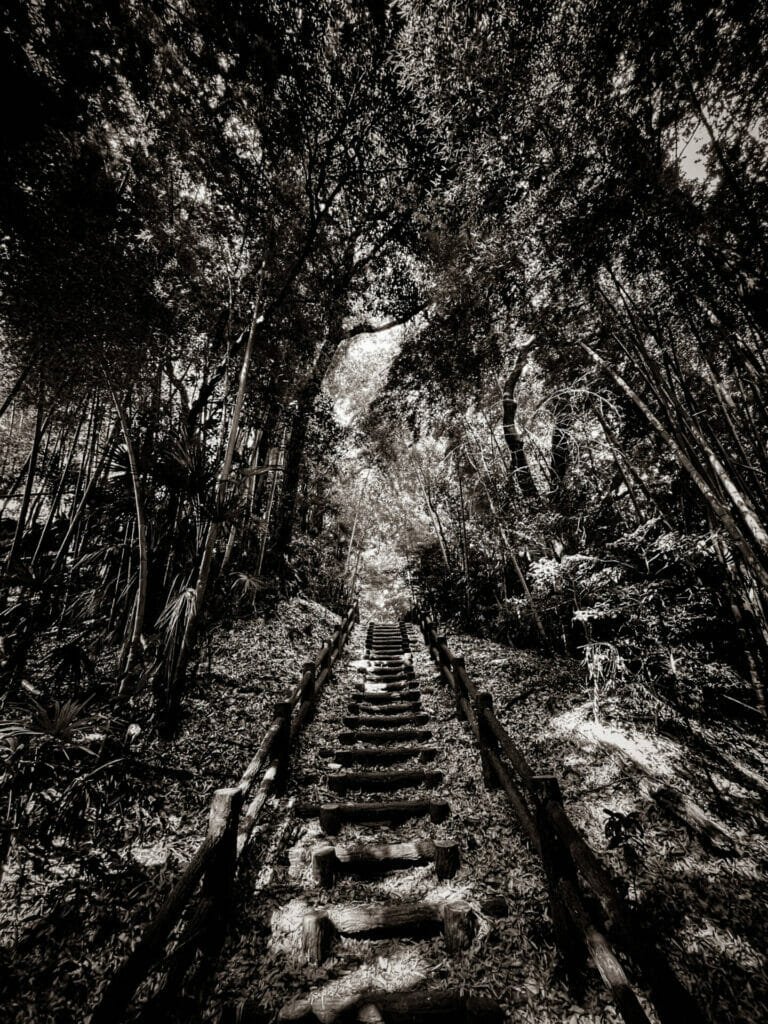Before I could consciously name it, I knew the woodpecker was there, tapping away on a high branch, several trees away and up the hill next to the trail. It was not loud, and you could easily have lost it among the other sounds of the forest if you weren’t paying attention.
It was about the size of a robin, but far away and back-lit, so I couldn’t make out the colors. I thought about my grandfather and his favorite bird, the pileated woodpecker, a bird with a seventy-five centimeter wingspan and a shock of crimson feathers atop its head.
When you grow up spending a lot of time out in the forest, you learn to interpret its languages. The sound of rustling leaves isn’t just rustling leaves, for example. Spend enough time in the woods and you develop a sense of whether it’s a bird or a deer or even a snake, and it happens before you can even turn your head to see.
Though the forests of Japan differ from those of my childhood, the old sensitivities remain highly valuable. When we go hiking, sometimes it’s hard to go with any speed down the trail because I can’t keep myself from noticing and pointing out every insect, frog, snake, and spider I see. And in the warmer months, at least, animals are everywhere.
In the winter, the forest is a much quieter place, but still full of life if you know where to look. When we went to wander around Hanno last Saturday, we mostly saw small birds, but also saw evidence of of small mammals and, in one area, wild boars had torn up a great deal of ground. Later, in a shallow river, an egret walked slowly, striking at intervals with its bill to catch small silver fish. Under the eves of a Buddhist temple, giant hornet1 nests hung pendulously, thankfully quiet in this season.
Spring isn’t far away now, and I look forward to the explosion of new life that will come in a matter of weeks, but am glad to have spent those quiet hours in the forest. Much is dormant in the winter, but not everything, and it’s always worth seeing what there is to see, appreciating what there is to appreciate, perhaps especially when there doesn’t seem to be much.
-
In recent years, it has become popular to call the Asian giant hornet “murder hornets,” but I will not do so, not now or ever. Even as an invasive species, I really don’t think we need to be popularizing any language that instills fear of the natural world. ↩︎


